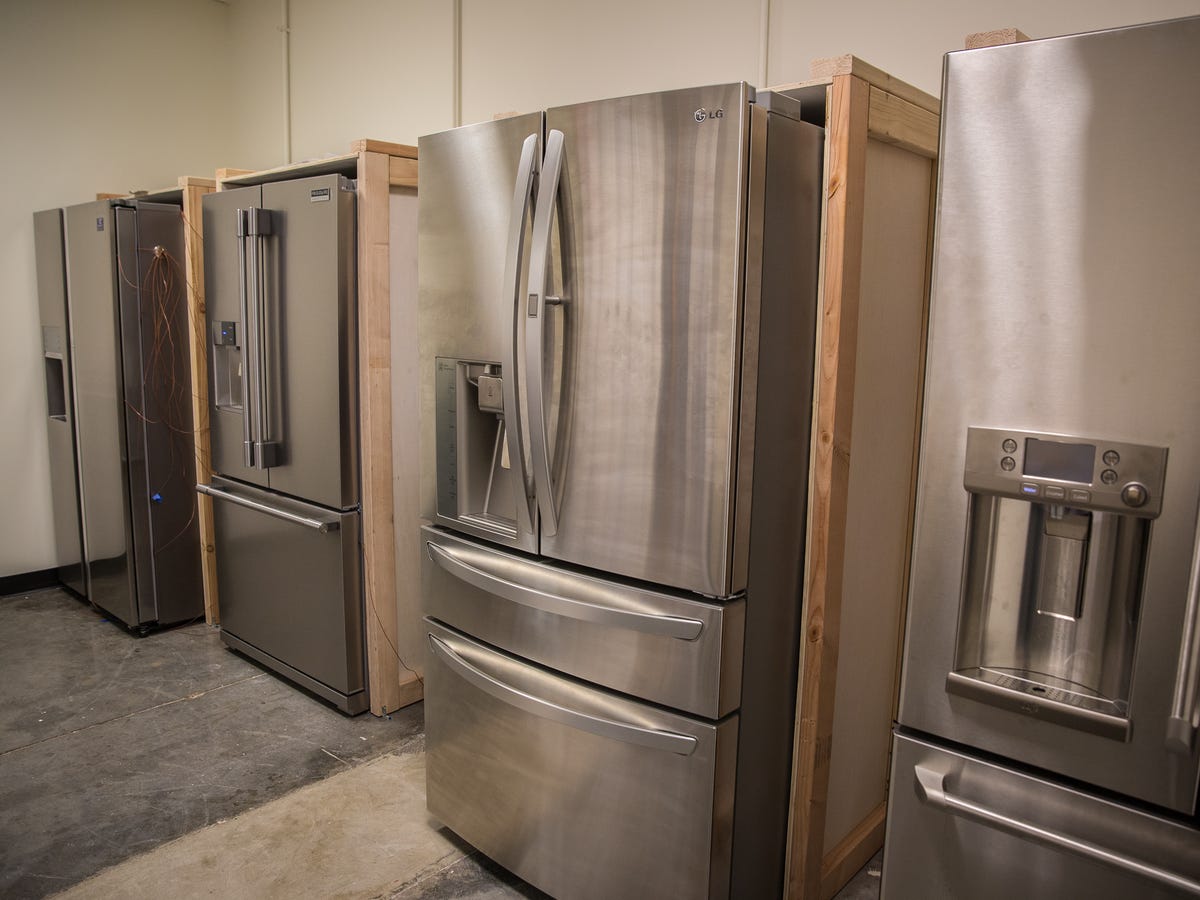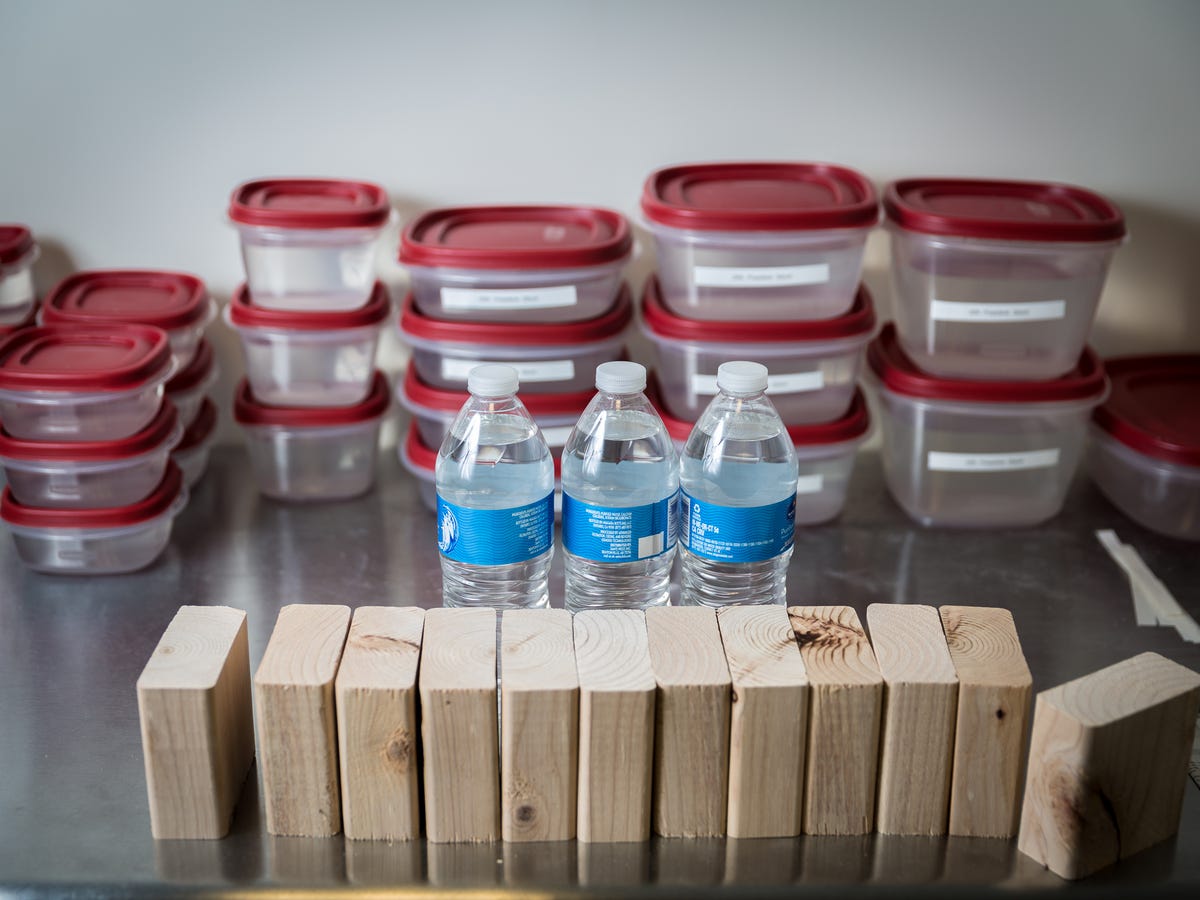How we test refrigerators (pictures)
We don't just plug them in and look at them! Click through for a look at our testing methodology for refrigerators.

Our testing chamber can accommodate four refrigerators at a time.

We place items like these -- water bottles, wood blocks and Tupperware containers full of propylene glycol -- into a refrigerator while we evaluate its cooling performance.
If a fridge has too much or too little mass inside it, we won't get an accurate picture of its cooling performance while we test.
Jars like these are placed throughout a refrigerator, with thermocouples inserted through the lid, to measure temperature at various locations inside the refrigerator.
Here's a refrigerator loaded with water bottles and Tupperware containers filled with propylene glycol.
These items give the fridge something to cool.
A jar of propylene glycol is situated within a refrigerator.
We use propylene glycol because it has a low freezing temperature.
If a fridge overcools, we don't have to worry about our thermocouples being frozen inside the jars.
Here you can see a thermocouple inserted through the top of a jar of propylene glycol.
The thermocouples are routed to these panels, where they are routed to data loggers throughout our testing labs.
These are temperature and humidity probes. The silver cylinder measures humidity, and the sponge hides a thermocouple to measure the average room temperature in the testing chamber.
We take all that data and generate heat maps, like this one, which show the average temperature in a refrigerator's compartments, over a 3-day period.
Fridge load testing
We also try to do some practical testing, like stuff the fridges as full of groceries as we can, to translate to their capacity measurements into practical terms.
Fridge load testing
We have a rack full of items that we load into the refrigerators.
Fridge load testing
We start by seeing what we can fit inside the refrigerator with the shelves arranged in "stock" configuration.
We have six stress-test items that we try to fit in the refrigerator.
Fridge load testing
We fill up the refrigerator with as many stress-test items as we can while the shelves are in a stock configuration.
Fridge load testing
We jam the fridges with as many of our groceries and stress-test items as we can!
Fridge load testing
Then, we rearrange the shelving to optimize the storage space.
Fridge load testing
And then we repeat the whole process to see if we can fit even more items inside the refrigerator.
Fridge load testing
We also see if we can fit even more of our stress-test items, like this large pizza box, with the shelves reconfigured.
Fridge load testing
We keep a tally of how many stress-test items fit in a refrigerator.

